Abstract
Background: Predicting which alien species may become invasive is important in prioritising scarce resources for management.
Objectives: Sixteen naturalised ornamentals in Cape Town were assessed for invasion potential in relation to a mechanistic framework. The recently spreading species, Centranthus ruber (L.) DC., was studied in detail following management actions and vegetation fires.
Method: The mechanistic framework was developed using nine features most likely to promote invasiveness. Species were assessed from their known characteristics, local usage and distribution records, including citizen science surveys. Surveys were conducted for C. ruber to assess its ability to survive and spread post-fire. Control efficacy for Centranthus ruber was assessed in plots at two sites.
Results: Nine species with more than 25 naturalisation records had a median of seven features that promote invasion compared to five features in the less recorded group of seven species. Centranthus ruber was widespread in modified urban habitats and persisted in natural habitats following vegetation fires and is a high priority for control. Post-fire mechanical and chemical control of C. ruber significantly reduced its density and cover, but did not eliminate it.
Conclusion: Naturalised ornamentals can move rapidly from latent to invasive phases; therefore, monitoring should start during the latent phase to detect sudden change. In fire-driven ecosystems it is essential to have good pre-fire baseline data. More residents should be encouraged to become spotters through citizen science programmes and to report new naturalised ornamentals. It is important to act early in the invasion process and to allocate sufficient resources, if a newly invasive species is to be contained.
Introduction
Cities are hubs of human-mediated introductions and dissemination of alien species (Kowarik 2011). The focus of this article is on a subset of these alien introductions, namely ornamentals that are introduced intentionally by the horticultural trade and gardeners. Many urban centres have a suite of exotic ornamental species that have escaped from gardens and become first naturalised, then invasive, in the surrounding landscape (McLean et al. 2017). In Cape Town, ornamentals currently are the main source of new invasive alien species and have a higher overall chance of naturalising than accidental introductions (Gaertner et al. 2016). They are promoted by the nursery trade or by citizenry informally swapping garden-adapted and attractive species and therefore are established widely and exposed to a large range of local environments. Furthermore, the very characteristics selected by gardeners, such as dense floral displays and easy propagation, are likely to promote naturalisation (Dehnen-Schmutz et al. 2007). From an environmental management perspective, it is important to know which naturalised ornamental species are potentially invasive, and what habitats to prioritise for control. This is particularly important for cities located in global biodiversity hot-spots where significant endemic biodiversity is under threat, such as Cape Town, situated in the Cape Floristic Region (CFR), South Africa (Geerts et al. 2017; Rebelo et al. 2011).
Urban areas differ ecologically from rural areas in having a larger species pool of exotic ornamentals and a more abundant and diverse array of novel habitats such as embankments, stone walls, road verges, landscaped parks and continuous disturbances caused by infrastructure construction, maintenance and improvement. These novel ecosystems further increase the probability of naturalisation, as propagules from established exotics can disperse into modified habitats (Alston & Richardson 2006) where there may be lower density and competition from native species for establishment, especially if the novel habitats are similar to the exotic’s native habitats (Kowarik 2011).
Where cities retain natural ecosystems as protected areas within their borders, as in Cape Town, the urban environment may represent a gradient of human-modified habitats through degraded-natural habitats to near-natural or natural habitats. Natural ecosystems – and indeed neighbouring agricultural systems – may be at increased risk of invasion by ornamentals established in adjacent modified or disturbed urban sites (Burton, Samuelson & Pan 2005; Pyšek 1998; Von der Lippe & Kowarik 2008). As for alien species in general, ornamentals require certain traits to enable them to cross important naturalisation barriers and establish (Richardson et al. 2000). Ornamental species that are pre-adapted to the local environmental conditions are the most likely to naturalise. Marco et al. (2010) found that species planted at garden margins in the Mediterranean Region were more likely to escape and those adapted to dry soil and with clonal growth were more likely to establish in adjacent old fields. Once naturalised in a modified habitat, the ability to invade a degraded-natural or natural habitat will depend on whether the species is pre-adapted to the local ecological drivers (e.g. flood or fire regime) and able to overcome the ecological resistance displayed by the native ecosystem (Funk et al. 2008).
To prevent invasions, species with the potential to rapidly become invasive must be identified early. Particularly those that might become ‘drivers of change’ or ‘ecosystem transformers’ (Richardson et al. 2000), which alter ecological functioning such as nutrient cycles and fire regimes to their own benefit and the detriment of native species. In common with other Mediterranean-climate ecosystems, summer fire is the driver of recruitment in local Fynbos and Renosterveld shrublands (Kraaij & Van Wilgen 2014), the two ecosystems forming the predominant natural interface with urban Cape Town. Many of the ecosystem transformer alien species in these habitats – such as pines, hakeas and wattles – exploit the post-fire invasion window to spread (Van Wilgen 2013). By contrast, forest and strandveld habitats, which are not fire-mediated, are invaded by bird-dispersed, non-fire adapted aliens.
Cape Town provides a useful study site as it encircles a national park and 17 nature reserves, contains many urban parks with natural vegetation fragments and also has typical urban-modified spaces that provide novel habitats (Holmes et al. 2012). Sixteen naturalised species known to be invasive internationally were initially flagged for monitoring, containment and extirpation by the City of Cape Town’s (‘the City’) Invasive Species Unit (http://www.capetowninvasives.org.za). Most of these species have spread to modified habitats, but it is not clear whether they will remain non-invasive, or are poised to invade natural ecosystems, that is, in the latent phase of invasion (Aikio, Duncan & Hulme 2010; Crooks 2005; González-Moreno et al. 2016). We provide a brief overview of the invasive potential of these high-risk ornamental species, using a mechanistic framework to link features of ornamentals to the urban gradient. Several authors have provided useful frameworks of invasion, such as identifying the major barriers to be overcome for invasion to proceed (Richardson et al. 2000) and generalised frameworks that summarise the complexity as three contributing processes, comprising the attributes of the potential invader, the biotic characteristics of the receiving habitat and the system context (Foxcroft, Pickett & Cadenasso 2011; Perkins, Leger & Nowak 2011). However, no framework specifically focuses on invasion potential of naturalised ornamentals. Using this framework, we attempt to flag which species are most likely to move from latent to initial invasion phase. With this approach, managers can make more informed decisions on where to deploy resources in control or monitoring operations and how to react to a new species population. As cities export invasive species to surrounding areas (Von der Lippe & Kowarik 2008), understanding and managing urban invasions may prevent further spread and costs at a regional scale.
We also present a detailed case study of one of the 16 species assessed in relation to the mechanistic framework: the perennial Centranthus ruber (L.) DC. (Valerianaceae), known as red valerian, red centranthus, Kiss-me-Kate, devil’s beard or Jupiter’s beard. This species appears to be in an initial invasion phase in Cape Town (Geerts et al. 2017).
The natural distribution of C. ruber is centred on the Mediterranean Balkan countries, southern France and Sardinia (Grillo et al. 2010; Martin et al. 2002; Mattana, Daws & Bacchetta 2010); therefore, it is pre-adapted to Cape Town’s Mediterranean-type climate. It is recorded from shrubland vegetation communities (i.e. referred to as Maquis, Matorral and Garique in various countries) and can become dominant on screes, cliff foots and in the early post-fire stage of vegetation succession (Baumel et al. 2009). It is used successfully in rehabilitation projects in southern France (Martin et al. 2002) and may occupy extreme micro-habitats such as walls in cities (Benvenuti 2004). The above characteristics suggest that the species is both stress- and disturbance-adapted (Grime 1977), being able to survive in exposed habitats lacking soil that are likely to experience drought and a wide range of temperatures, and also able to recruit after fire as it is more dominant in the early seral stage of the succession. These characteristics suggest that the species is pre-adapted in its naturalised range to colonise open areas that have been cleared of vegetation through natural or unnatural disturbances. It is naturalised in many countries, including Australia (Mattana et al. 2010), New Zealand (Wotherspoon & Wotherspoon 2002), Argentina (Delucchi 2013), USA (California [Cory & Knapp 2014], Hawaii [Starr, Starr & Loope 2003]) and the British Isles (Gardner & Burningham 2013; Williamson 2002).
Centranthus ruber is a chamaephyte (Benvenuti 2004) with an extensive fleshy root system and has the ability to regrow from its roots (i.e. re-sprout), and can be propagated from both root divisions and seeds (Starr et al. 2003). It grows rapidly and has a lengthy flowering season (early summer to late autumn), producing multiple flowers with small pappus and plumed seeds that can be dispersed long distances by wind (Gardner & Burningham 2013). To become invasive in Fynbos and Renosterveld shrublands, naturalised ornamentals require the ability to survive and recruit new individuals despite a 15-year cycle of summer fire. We investigate the persistence and spread of this species across the urban gradient following recent fires as well as the efficacy of control attempts.
Methods
Study areas and data sources
Our analysis is confined to Cape Town, which is a coastal city of 2460 km2 in extent, located at the south-western corner of South Africa (Figure 1-A1). The city falls within the CFR global biodiversity hot spot (Holmes et al. 2012) and has a Mediterranean-type climate with hot, dry summers and cool, wet winters. Mean annual rainfall ranges from 400 mm along the West Coast forelands up to 2000 mm on the eastern upper slopes of Table Mountain. Dominant vegetation types are Fynbos shrublands on nutrient-poor substrata and Renosterveld shrublands on more nutrient- and clay-rich substrata (Rebelo et al. 2011). These are fire-prone vegetation types that require summer fire for recruitment, whereas the Strandveld shrublands on coastal, alkaline sands and Afrotemperate Forest on screes and gullies occur in fire-protected sites and recruit continuously.
Sixteen naturalised species identified as eradication priorities by the City’s Invasive Species Unit are monitored city wide, using a volunteer spotter network (http://www.capetowninvasives.org.za/). Volunteers recorded the date, locality, numbers of plants and any control measures undertaken of these species on this online database. The spotter network was initiated in 2011, but it took a few years to build up volunteer participation of active spotters (currently [May 2017] a total of 29 spotters, including City staff that have recorded 10 records or more) to obtain 2676 detailed records of locality and abundance. We excluded species subsequently flagged as being highly invasive elsewhere, but not yet naturalised in Cape Town, and aquatic species. Submitted data are validated in field checks by City staff and appropriate action is scheduled in the process.
Mechanistic framework
Features likely to promote invasion and spread of ornamentals across the urban gradient were derived from first principles to build a simple mechanistic framework against which to assess different species (Kolar & Lodge 2001; Richardson et al. 2000). Nine features of ornamental species that promote naturalisation, persistence in modified or degraded-natural habitats and dispersal into and spread in natural habitats were highlighted in this mechanistic framework (Figure 1). These included human influences that are important in assisting colonisation as well as biotic traits of the aliens (Wilson et al. 2016). Ornamentals with an attractive floral display may have potential for higher seed production and distribution by the gardening sector that could lead to an increase in propagule pressure (Blackburn et al. 2011; Richardson et al. 2000). Those that are easy to grow and propagate from seeds or vegetative propagules are likely to be pre-adapted to local edaphic and climatic conditions, further promoting their distribution by the gardening sector and the ability to grow unaided in modified habitats. Once species have become widely distributed, propagule pressure into adjacent natural habitats increases (Blackburn et al. 2011; Richardson et al. 2000). Ornamentals that are tolerant of extreme conditions are more likely to colonise novel habitats in urban areas such as stone walls, gabions, quarries, erosion scars and exposed, disturbed sites (Benvenuti 2004), resulting in widespread distribution. Those that are competitive will grow quickly and establish in vegetation gaps in modified or degraded-natural vegetation alongside ruderal weeds and indigenous species (Perkins et al. 2011). Ornamentals with no close relatives in the area of introduction present phylogenetic novelty and as a result are less likely to be thwarted by local pests and diseases than those with congeners present (Correia & Rodríguez-Echeverría 2016). The last three features will promote persistence in novel urban habitats and degraded-natural sites. Invasion potential will be promoted further in species with long-distance propagule dispersal: for example, those spread by wind or animals, which will allow entry into adjacent intact natural vegetation (Richardson et al. 2000). If species are pre-adapted to the local disturbance regime, for example possessing heat-stimulated germination to promote establishment in fire-prone Fynbos and Renosterveld vegetation, they are more likely to become invasive (Wilson et al. 2014). The latter two features, in combination with features leading to wide distribution and persistence, are most likely to result in an ornamental species becoming invasive in one or more of the local ecosystems (Figure 1).
 |
FIGURE 1: Mechanistic framework of species’ features that promote spread of naturalised ornamentals across the urban environmental gradient with appropriate management responses indicated. The invasion risk increases as the shading on the arrow intensifies. See the text for detailed explanations of the mechanisms. |
|
The 16 naturalised species were assessed against the mechanistic framework using information from the published literature and personal observations. The first recorded dates of these species in the city were extracted from the literature and herbarium records. The number of records per species in the spotter network database was totalled and each record in the database was assigned to one of three habitat condition classes based on the locality: modified habitat (e.g. urban gardens, embankments and borrow pits), degraded-natural (e.g. fire belts, invaded with other alien plant species, alien clearing stacks) or natural or near-natural.
Detecting incipient invasion
To assess naturalisation and establish a baseline for detecting invasion, four components of rate of spread were assessed to provide an indicator of potential invasiveness.
Reporting rate: Observation data are an indication of the sampling intensity and the point abundance of a species. Spotter network data were adjusted for sampling intensity by proportionally correcting the annual data for the total proportion of samples per year, using:
a = Sx/(Ox/Ot)/6
where a is abundance; Sx is the number of sightings for species for yearx, Ox is observations in year x, and Ot is total observations over the six years.
Distribution range: The total areal range of the species (in decimal degrees) was calculated by determining the convex hull around all the sample records accumulated over the years, using minimum bounding geometry with convex hull option (using ArcGIS 10).
Occupancy of the species (realised range within the distribution): Calculated by overlaying a 0.01 degree grid (approximating 920 m × 1100 m) over the area and counting the number of cells with data for each year, over the years (using ArcGIS 10).
Mean population size for the species: Calculated from the abundance estimates. Annual means with five or fewer observations were excluded from analysis.
Centranthus ruber case study
Centranthus ruber was selected as a case study because citizen scientists on iSpot (http://www.ispotnature.org; now migrated to iNaturalist at https://www.inaturalist.org/observations?place_id=52355&taxon_id=57283) and the City spotter network raised the alarm that it might be in the initial invasion phase and thus might negatively impact critically endangered Renosterveld and Fynbos ecosystems in the City. Validation of data on iNaturalist is easy as records are accompanied by photographs, and anyone can validate an identification. As with other priority-naturalised species, site validation and control of this species by City staff was attempted and recorded on the spotter network database.
Literature was reviewed to summarise the invasive and ecological characteristics of C. ruber. Data from citizen science sites iNaturalist and the spotter network were extracted for Cape Town. Following the large Cape Peninsula fire in March 2015, all the localities in the burn and surrounding areas recorded on the spotter network and iNaturalist were revisited in late September 2016 to assess persistence and spread, as well as to record vegetation condition and post-fire age.
To assess efficacy of control operations, a study of C. ruber abundance at two sites – on a fire belt in Shale Renosterveld at Tygerberg Nature Reserve and in cleared pine plantations on Granite Fynbos at Tokai section of Table Mountain National Park – were surveyed post-fire in 1 m2 plots in August 2015. The Tygerberg fire was a prescribed ecological burn in February 2015, whereas the Tokai fire was a part of a large Cape Peninsula wild fire in March 2015. Control operations, using foliar herbicide application and hand-pulling, were performed in the year following the August 2015 survey. A repeat survey was conducted in August 2016, to assess whether the species had been successfully controlled or had persisted and spread in the post-fire environment. In both surveys, C. ruber density (number per m2) and cover (% canopy cover) were recorded in 1 m2 plots initially placed where C. ruber had re-sprouted post-fire in 2015. Seven and 15 plots each positioned along four transects were sampled at Tygerberg and Tokai, respectively. Where original plot markers were lost, resampling was performed close to the original placements. Wilcoxon rank sum tests were used to assess differences between 2015 pre-control and 2016 post-control data sets. During the 2016 survey, general observations of newly established patches of C. ruber at these localities were noted.
Results and discussion
Mechanistic framework
Of the 16 naturalised ornamentals flagged by City of Cape Town for extirpation and containment, 9 have 25 or more records (Table 1). All but one species (Cardiospermum grandiflorum) possess at least three of the first four features, confirming high potential to become widely distributed in modified urban habitats. Nine have long-distance propagule dispersal mechanisms, conferring ability to move into natural vegetation, and none has close relatives, and therefore should experience ecological release and increased productivity (Keane & Crawley 2002). All species either are stress-tolerant or competitive and have potential to move from modified to degraded-natural habitats. Eight are pre-adapted to survive fires (either through re-sprouting capability or fire-stimulated seed dispersal or germination) and have potential to invade adjacent fire-prone shrubland habitats. Non-fire adapted species, such as Ailanthus altissima, Anredera cordifolia and Pittosporum undulatum have potential to invade indigenous forest patches as well as urban riparian areas where fires are now excluded.
| TABLE 1: Priority-naturalised ornamental species flagged by City of Cape Town for extirpation and control, indicating traits that could potentially facilitate their invasion of natural ecosystems. |
Comparing features between the group of ornamentals with 25 or more records (nine species) versus those with fewer records (seven species), the former have a median of seven of the features in the mechanistic framework compared to a median of only five features in the less recorded group. Examining the particular features, this difference can be attributed mainly to Feature 4 (widely distributed, desirable species) and Feature 5 (tolerant of extreme conditions) of the framework where 67% of the former possess those features versus only 11% of the latter group. Both of these features have promoted establishment in modified and disturbed sites.
To date, all 16 species have relatively low occurrence in degraded-natural or near-natural habitats, except for Genista monspessulana with over half of its records in degraded-natural habitats and P. undulatum, which has colonised degraded riparian and forest habitats (Figure 2). Genista monspessulana colonises disturbed sites and accumulates a large, persistent soil-stored seed bank (Geerts et al. 2013), which may respond favourably to fires. Its lack of long-distance dispersal may limit its invasion of Fynbos and Renosterveld shrubland habitats. Because of its currently limited distribution, Geerts et al. (2013) suggest that extirpation of G. monspessulana may be feasible, whereas that of the more widespread Spartium junceum, which is also fire-adapted, may not. The observed pattern of spread for fire-adapted species will only be evident after a fire, on average, every 15 years for a particular location in Fynbos. As the spotter network has only been running since 2011, it is too early to assess the invasive potential of such species. Nevertheless, this data set provides a baseline to which managers can refer in planning for control operations and monitoring spread, particularly post-fire. Ongoing monitoring, especially after future fire events, will be important to assess spread. However, given the limited distribution of G. monspessulana to date, coupled with its high invasion potential, it has been prioritised for immediate control and extirpation.
 |
FIGURE 2: Priority-naturalised ornamentals in Cape Town with 25 or more records, indicating the percentage of mapped occurrences in modified (man-made), degraded-natural (e.g. cut firebelts) and near-natural habitats across the urban gradient. |
|
Detecting incipient invasion
In all four indices (reporting rate, distribution range, occupancy and mean population size), C. ruber showed characteristics of recent and pronounced increase, despite ongoing control (Appendix 1, Figure 2-A1 to Figure 6-A1). Other species showed high values (and indeed higher than for C. ruber) for some indices, but not consistently. However, given that the spotter network is only 6 years old, it is clear that the more widespread species have not been adequately sampled, and it may be premature to read too much from the proposed indices. It is therefore important that surveys, including citizen science participation, continue in order to improve the baseline information for these species and the ability to assess invasion potential in future.
Centranthus ruber case study
Ecological attributes
Centranthus ruber is a recently recorded, naturalised ornamental with most records in Cape Town, but is also established in towns to the north and east of the city as far as Bredasdorp (180 km to the east) in the Western Cape (https://www.inaturalist.org/observations?place_id=6987&taxon_id=57283). The first record as a garden escapee was at Kloof Nek in 1995, then in 1999 along Rhodes Drive near Constantia Nek, both sites on the Cape Peninsula adjacent to the Table Mountain National Park (SANBI herbarium data). The first citizen science record was in 2009, and by 2012, it was noted on iSpot to have become widespread. By 2016, there were over 700 records for the species over the entire city, but mainly on the periphery adjacent to natural habitats (iNaturalist and spotter network, Supplementary Figure 1).
Centranthus ruber occurs on all the major geological formations in Cape Town (Table 2) and is not restricted by substratum. When corrected for extent of each geological type, Cape Granite Suite, with its relatively rich soils, had the highest number of occurrences and the largest mean population size. This geology also dominates at the urban edge on the Cape Peninsula; therefore, this result could be confounded by proximity to and propagule pressure from gardens. In addition, its establishment in road islands and verges has resulted in rapid spread throughout the granite geology.
| TABLE 2: Distribution of Centranthus ruber records on different geological formations in Cape Town. |
Previous studies revealed that optimal germination was recorded at 20°C (81%; with T50 of 1.0 days), with reduced germination above this temperature and none at 35°C (Brofas et al. 2007). Benvenuti (2004) found that a cold stratification treatment (30 days at 4°C) further improved total germination, with a seed burial depth of 4 mm in the soil being optimal: seed of C. ruber is relatively large for a wind-dispersed species (1.254 mg) and germinated well from this depth. From these attributes, the species is well adapted to germinate in Cape Town’s cool, wet winter season. However, there are no data as to how seed banks would respond to intense Fynbos fires.
Lavorel et al. (1993) noted the species to be present at low density in the soil seed bank of 7- and 15-year-old abandoned ploughed fields in southern France. A seed burial experiment indicated 57.8% seed persistence after 1 year, with 83.3% viability in the remaining seed (Mattana et al. 2010). Based on its seed size and shape (long and narrow), it is atypical of species forming a long-term (> 5 year) persistent soil seed bank (Thompson & Hodgson 1993), but may form at least a short-term persistent seed bank (Thompson 1992). Cory and Knapp (2014) found that in Santa Cruz Island, California, successfully clearing adults yielded no emergent seed bank populations. However, in areas where initial control fails to remove all plants prior to the seed production stage, a short-term seed bank potentially could establish to promote the persistence and spread of the species in its naturalised range. Follow-up control of this species should therefore be anticipated inter-fire in management strategies.
These life-history characteristics, stress tolerance and distributional pattern of C. ruber suggest the species to be a typical urban invader, escaping from ornamental plantings and establishing in neighbouring open spaces, particularly in modified or degraded-natural sites (Gaertner et al. 2016; Marco et al. 2010; Rahlao et al. 2010).
Impact of fire on Centranthus ruber distribution on the Cape Peninsula
Centranthus ruber has fleshy leaves and is relatively fire retardant compared to most Fynbos species, suggesting that adults might survive cool fires. The available data indicate that C. ruber is resilient to fire, as it persisted as adults in a few areas where it was recorded prior to the March 2015 Cape Peninsula fire (Figure 3). Most of the naturalised populations are in human-modified sites: 95% in modified habitat such as road verges, quarries, gabions and areas around built infrastructure; 4% in degraded vegetation, such as fire belts and slash piles; and 1% in near-natural vegetation (Figure 2). However, because of the large number of sightings, this represents 35 observations in degraded-natural and natural habitat, which is of concern for conservation managers. Locations of established plants in natural vegetation were close to roads, but one sighting in degraded Fynbos was 150 m upslope from the nearest garden planting. At Tokai, one new population was recorded post-fire 50 m from the nearest population recorded previously in degraded Fynbos recovering following pine harvesting. These observations indicate the potential dispersal distance into natural vegetation. Geerts et al. (2017) noted a dispersal distance of 20 m, but further along footpaths and roads. The majority of records at Tokai are close to roads, but 80% of the area is within 100 m of former forestry roads and the pattern of establishment suggests dispersal along roads as a result of vehicular traffic: a well-documented invasion pathway (Von der Lippe et al. 2013).
 |
FIGURE 3: Centranthus ruber recorded distribution and density on the Constantiaberg–Tokai portion of the Cape Peninsula before and after the March 2015 fire; burnt area depicted in light shading and urban areas in dark grey; ‘+’ indicates null records. |
|
This attempt to ascertain invasive potential of C. ruber indicates the need for more detailed baseline distributional data. It would seem that the vegetation fire did not result in widespread expansion and most new sightings were in modified or degraded-natural habitat. However, once established in degraded-natural habitat, its fire-retardant properties could alter the fire regime sufficiently in its own favour, hampering restoration efforts (Gaertner, Holmes & Richardson 2012). It is highly recommended that monitoring continue and new populations in natural vegetation habitats and adjacent degraded habitats are prioritised for control. Note that in fire-driven ecosystems such as Fynbos and Renosterveld, spread of alien species can only be detected post-fire and not inter-fire; therefore, long-term comparative data (at greater than 15 year intervals) are essential to monitor range expansion. This contrasts with the degraded and modified portion of the urban gradient, as well as natural ecosystems that are not fire-dependent, where invasion can be ongoing and easily monitored between years.
Unfortunately, we missed the opportunity to directly characterise the effects of fire on C. ruber. The presence of C. ruber post-fire indicates that it can either survive fire in the soil seed bank or by re-sprouting, or that it can re-invade through seed dispersal from mature plants outside the burnt area. At Tokai, the areas adjacent to the study sites also burnt in the March 2015 fire, so re-invasion by dispersal is less likely than at Tygerberg, which is surrounded by residential development. Impressions from Tokai are that the 2015 fire reduced the populations dramatically and eliminated the seed banks, but that surviving re-sprouters produced large quantities of seeds in the year post-fire, potentially restoring the seed banks, and allowing recruitment in the second year post-fire, especially in moister habitats. These data suggest that C. ruber populations can be resilient to fire. Plant morphology (fleshy leaves and re-sprouting capability from rootstock) and seed characteristics (shallow seed bank of heat sensitive seeds) suggest that fires of high intensity would drastically reduce the adult and seed bank population size, whereas cool fires would result in higher survival and potential recruitment from persisting soil-stored seeds. Ecological burns conducted during the summer dry season are more likely to control this species in natural Fynbos and Renosterveld vegetation than aseasonal cool fires, and such intense fires are recommended as part of the management strategy to control invasion by this species. Extensive post-fire control should be scheduled after cooler fires.
Effectiveness of control on Centranthus ruber after fire in Cape Town
We surveyed C. ruber to assess control efforts in two protected areas: Tygerberg Nature Reserve and Tokai section of Table Mountain National Park (Appendix 1, Figure 1-A1) on shale- and granite-derived soils, respectively.
At Tygerberg, the post-fire density and cover of C. ruber was relatively low (Figure 4) and mainly confined to the disturbed, unburnt Renosterveld fire-belt area adjacent to housing. Control efforts to C. ruber, by hand-pulling and foliar application of systemic herbicide, reduced both cover and density (the latter sevenfold) (Wilcoxon rank sum tests, cover: n = 7, W = 42.0, P = 0.009; density: n = 7, W = 45.5, P = 0.007), but did not extirpate the species. There was no evidence of further spread into the post-fire natural Renosterveld vegetation, with only a few plants persisting near the edge of the near-natural vegetation.
 |
FIGURE 4: (a) Centranthus ruber post-fire percentage cover at Tygerberg Nature Reserve, (b) Centranthus ruber post-fire percentage cover at Tokai section of Table Mountain National Park and (c) density (No/m2) (mean + 1SD) at Tygerberg Nature Reserve, (d) density (No/m2) (mean + 1SD) at Tokai section of Table Mountain National Park before control operations in August 2015 and following control operations in August 2016. |
|
At Tokai, in former pine plantation areas, the cover and densities in 2015 were much higher on average than at Tygerberg (Figure 4). Here, the species was also not extirpated and the pattern of decline post-control was similar, with cover reduced by 61% and density six-fold (Wilcoxon rank sum tests, cover: n = 15, W = 168.0, P = 0.021, density: n = 15, W = 184.5, P = 0.003). The presence of some larger individuals in 2016 indicated survival by re-sprouting from rootstock following herbicide treatment or pulling, but most of the plants were small individuals that had germinated post-control. There was evidence of some new populations appearing in degraded, but recovering Fynbos areas adjacent to the originally mapped populations that were sampled.
Centranthus ruber was not extirpated by one control operation at either site, but both cover and density showed significant reductions post-control (Figure 4). As individuals may re-sprout from rootstock, manual clearing should ensure that the roots are grubbed out or else the plants should be chemically treated. The long flowering season and short-term persistent soil seed bank of C. ruber, combined with wind-dispersed seed, indicate that 3–5 years of follow-up will be required to ensure that the plant is extirpated (Geerts et al. 2017). The ability of soil-stored seeds to potentially survive fires indicates that early detection post-fire will be important in areas of its known occurrence. Control post-fire in natural areas should attempt to eliminate recruitment from seeds by re-sprouting survivors in the vulnerable window for invasion during the first two post-fire years.
Recommendations for management
Species such as C. ruber, G. monspessulana, Verbesina encelioides and Cortaderia selloana are attractive, robust and widely cultivated ornamentals pre-adapted to local environmental conditions and have life-history traits to reproduce and establish in disturbed or open habitats that are plentiful across the urban gradient. Possession of the above features plus traits conferring adaptation to the natural disturbance regime results in high potential to become invasive (Figure 1). For example, G. monspessulana, C. ruber and S. junceum are fire-adapted, and with increasing propagule pressure from their naturalised populations in modified habitats can spread into and establish in disturbed open habitats, then spread into natural habitats and recruit during the post-fire invasion window (Gaertner et al. 2012).
Monitoring of naturalised ornamentals is important to track any sudden increase in numbers or distribution that could indicate a change from latent to invasion phase, particularly after a natural disturbance event. This is crucial for those species with long-distance dispersal mechanisms and adaptations to the natural disturbance regime that potentially can become invasive (Table 1). Insufficient early monitoring makes it difficult to distinguish between data that reflect an increased awareness of an emerging invader versus its genuine range expansion along the urban gradient, emphasising the importance of good baseline data for any newly naturalised, potentially invasive ornamental. Natural ecosystems adjacent to modified urban habitats where such species are established, for example quarries, walls and embankments, should be prioritised for monitoring.
Other features across the urban gradient that could facilitate invasion should be identified and monitored for early intervention, for example tracks where vehicles and hikers’ shoes can disperse seeds from modified urban habitats into adjacent degraded habitats (Von der Lippe & Kowarik 2008), as was found for C. ruber along forestry plantation roads in Cape Town. Roads and path networks, and especially roadheads, in conservation areas should be monitored for alien species and awareness increased among field staff regarding the inadvertent spread of alien propagules during maintenance operations. It is important for conservation managers to increase awareness of potential invasive alien species and on preventing their spread.
Efforts to extirpate alien species at the interface with natural habitats should continue, stepping up advocacy, but focusing on households adjacent to disturbed-natural habitat where naturalised ornamentals may gain a foothold to invade natural areas. Where a species can establish nascent foci up to 150 m into natural vegetation, as noted for C. ruber in Cape Town, plants in gardens and urban open spaces within 200 m of natural habitat should be actively removed as a precautionary principle. Residents more distant from natural areas should be encouraged to replace high-risk naturalised ornamental species with alternative non-invasive species. This assessment has highlighted the importance of acting early in the invasion process, as it may already be too late to control the more widespread naturalised ornamental species without major resource allocation. Alternatives to consider are biological control or abandonment of control, the latter not being an option in conservation areas. Species with lower potential for long-distance dispersal that are not yet widely spread, such as Melaleuca hypericifolia, are good candidates for manual and chemical extirpation.
As the transition from non-invasive to well-established invader may occur rapidly – within a few years of a natural disturbance event – it is recommended that more profiling of threatening ornamental weeds should be done by national, regional and local authorities, as well as the screening of other potentially invasive ornamentals. The process for listing species with high invasive potential should be accelerated to facilitate the banning of trade in particularly high-risk species so that they do not enter the public arena. While the aim is to prevent or remove these species from being used in gardens and public places, it is crucial that any species unexpectedly spreading along the urban gradient be detected and monitored. More residents should be encouraged to become ‘spotters’ through citizen science programmes and to report species that show a tendency to naturalise, whether urban winners likely to be widely cultivated, or surprise invaders. Relevant authorities should set up citizen science projects and support long-term maintenance of these projects and their databases, and act timeously on data received. Spreading species need to be rapidly and carefully contained and subpopulations that invade natural ecosystems targeted for priority removal. Often by the time a species is detected as spreading, it can be too late for extirpation, either for economic or social reasons.
Conclusions
Using tools, such as the mechanistic framework proposed in this article, to improve the early detection of an incipient invader is important to identify and respond rapidly to such a species. It will also alert management and potentially avoid incurring huge resources in future should the species be likely to disperse and become a transformer invader with high negative impacts on the invaded ecosystem and the ecosystem services it delivers.
Where insufficient resources are available to managers for monitoring, citizen science programmes are an essential, complementary tool to track changes in distribution of alien species and to flag any new species that may require monitoring. Such programmes may be fine-tuned to promote a focus on species with features most likely to lead to invasion in the target ecosystems, as outlined in the mechanistic framework described above.
Long-term comprehensive data are essential to assess whether changes in distribution are real rather than reflecting sampling intensity and bias. Hence, an increased level of citizen awareness is required to improve frequency of detection and reporting of potential invaders. The challenge is to maintain interest in the spotter network over long time frames and to act on data coming in. New species need to be continuously added to the monitoring list and successful extirpations lauded and monitored. We believe our approach to profiling potentially invasive species from among those naturalised and the monitoring of these species will help to prevent more species becoming invasive in natural areas in and around our cities.
Acknowledgements
We thank Elana Kellerman, Clarissa Fransman and Phumudzo Ramabulana for field assistance. Mirijam Gaertner and John Wilson provided constructive suggestions for improving the article. The views expressed in this article are our own and not those of the institutions listed above. The research was conducted as part of normal work activities at City of Cape Town and SANBI.
Competing interests
The authors declare that they have no financial or personal relationships that may have inappropriately influenced them in writing this article.
Authors’ contributions
P.M.H. collected the field data, performed data analysis and wrote the first draft of the article. A.G.R. collected the field data, conducted GIS data analysis and figures and edited the article. U.M.I. collected the field data and edited the article.
References
Adamson, R.S. & Salter, T.M., 1950, Flora of the Cape Peninsula, Juta & Co., Ltd., Cape Town.
Aikio, S., Duncan, R.P. & Hulme, P.E., 2010, ‘Lag-phases in alien plant invasions: Separating the facts from the artefacts’, Oikos 119, 370–378. https://doi.org/10.1111/j.1600-0706.2009.17963.x
Alston, K.P. & Richardson, D.M., 2006, ‘The roles of habitat features, disturbance, and distance from putative source populations in structuring alien plant invasions at the urban/wildland interface on the Cape Peninsula, South Africa’, Biological Conservation 132, 183–198. https://doi.org/10.1016/j.biocon.2006.03.023
Baumel, A., Affre, L., Véla, E., Auda, P., Torre, F., Tatoni, T. et al., 2009, ‘Ecological magnitude and fine scale dynamics of the mediterranean narrow endemic therophyte, Arenaria provincialis (Caryophyllaceae)’, Acta Botanica Gallica 156, 259–272. https://doi.org/10.1080/12538078.2009.10516156
Benvenuti, S., 2004, ‘Weed dynamics in the Mediterranean urban ecosystem: Ecology, biodiversity and management’, Weed Research 44, 341–354. https://doi.org/10.1111/j.1365-3180.2004.00410.x
Blackburn, T.M., Pyšek, P., Bacher, S., Carlton, J.T., Duncan, R.P., Jarošk, V. et al., 2011, ‘A proposed unified framework for biological invasions’, Trends in Ecology & Evolution 26, 333–339. https://doi.org/10.1016/j.tree.2011.03.023
Brofas, G., Trigas, P., Mantakas, G. & Karetsos, G., 2007, ‘Rehabilitation of disturbed areas by mining activities in high floristic diversity areas : The case of Mt Giona’, 3rd International Conference on Sustainable Development Indicators in the Minerals Industry, Milos Island, Greece, June 12–20, 2007, pp. 1–6.
Burton, M.L., Samuelson, L.J. & Pan, S., 2005, ‘Riparian woody plant diversity and forest structure along an urban-rural gradient’, Urban Ecosystems 8, 93–106. https://doi.org/10.1007/s11252-005-1421-6
Correia, M. & Rodríguez-Echeverría, S., 2016, ‘Evidence for enemy release and increased seed production and size for two invasive Australian acacias’, Journal of Ecology 104, 1391–1399. https://doi.org/10.1111/1365-2745.12612
Cory, C. & Knapp, J.J., 2014, ‘A program to eradicate twenty-four nonnative invasive plant species from Santa Cruz Island’, Monographs of the Western North American Naturalist 7, 455–464.
Crooks, J.A., 2005, ‘Lag times and exotic species: The ecology’, Ecoscience 12, 316–329. https://doi.org/10.2980/i1195-6860-12-3-316.1
Dehnen-Schmutz, K., Touza, J., Perrings, C. & Williamson, M., 2007, ‘A century of the ornamental plant trade and its impact on invasion success’, Diversity and Distributions 13, 527–534. https://doi.org/10.1111/j.14724642.2007.00359.x
Delucchi, G., 2013, ‘Centranthus ruber (Valerianaceae) adventicia en la República Argentina Material y Método’, Multequina 22, 45–50.
Domènech, R. & Vilà, M., 2008, ‘Cortaderia selloana seed germination under different ecological conditions’, Acta Oecologica 33, 93–96. https://doi.org/10.1016/j.actao.2007.09.004
Feenstra, K.R. & Clements, D.R., 2008, ‘Biology and impacts of Pacific island invasive species. 4. Verbesina encelioides, golden crownbeard (Magnoliopsida: Asteraceae)’, Pacific Science 62, 161–176. https://doi.org/10.2984/1534-6188(2008)62{[}161:BAIOPI]2.0.CO;2
Foxcroft, L.C., Pickett, S.T. & Cadenasso, M.L., 2011, ‘Expanding the conceptual frameworks of plant invasion ecology’, Perspectives in Plant Ecology, Evolution and Systematics 13, 89–100. https://doi.org/10.1016/j.ppees.2011.03.004
Funk, J.L., Cleland, E.E., Suding, K.N. & Zavaleta, E.S., 2008, ‘Restoration through reassembly: Plant traits and invasion resistance’, Trends in Ecology & Evolution 23, 695–703. https://doi.org/10.1016/j.tree.2008.07.013
Gaertner, M., Holmes, P.M. & Richardson, D.M., 2012, ‘Biological invasions, resilience and restoration’, in J. van Andel & J. Aronson (eds.), Restoration ecology: The new frontier, pp. 265–280, Blackwell Publishing, Oxford. https://doi.org/10.1002/9781118223130.ch20
Gaertner, M., Larson, B.M.H., Irlich, U.M., Holmes, P.M., Stafford, M.L. and Richardson, D.M., 2016, ‘Managing invasive species in cities: A framework from Cape Town, South Africa’, Landscape and Urban Planning 151, 1–9. https://doi.org/10.1016/j.landurbplan.2016.03.010
Gardner, E. & Burningham, H., 2013, ‘Ecology and conservation of the rare annual Petrorhagia nanteuilii (Childing Pink) on the vegetated shingle spits of Pagham Harbour, West Sussex’, Journal of Coast Conservation 17, 589–600. https://doi.org/10.1007/s11852-013-0257-0
Geerts, S., Botha, P.W., Visser, V., Richardson, D.M, and Wilson, J.R.U., 2013, ‘Montpellier broom (Genista monspessulana) and Spanish broom (Spartium junceum) in South Africa: An assessment of invasiveness and options for management’, South African Journal of Botany 87, 134–145. https://doi.org/10.1016/j.sajb.2013.03.019
Geerts, S., Rossenrode, T., Irlich, U.M. & Visser, V., 2017, ‘Emerging ornamental plant invaders in urban areas – Centranthus ruber in Cape Town, South Africa as a case study’, Invasive Plant Science and Management 10, 322–331. https://doi.org/10.1017/inp.2017.35
González-Moreno, P., Pino, J., Cόzar, A., Garcia de Lomes, J. & Vilà, M., 2016, ‘The effects of landscape history and time-lags on plant invasion in Mediterranean coastal habitats’, Biological Invasions 19, 549–561. https://doi.org/10.1007/s10530-0161314-z
Grillo, O., Mattana, E., Venora, G. & Bacchetta, G., 2010, ‘Statistical seed classifiers of 10 plant families representative of the Mediterranean vascular flora’, Seed Science and Technology 38, 455–476. https://doi.org/10.15258/sst.2010.38.2.19
Grime, J.P., 1977, ‘Evidence for the existence of three primary strategies in plants and its relevance to ecological and evolutionary theory’, The American Naturalist 111, 1169–1194. https://doi.org/10.1086/283244
Henderson, L., 2006, ‘Comparisons of invasive plants in southern Africa originating from southern temperate, northern temperate and tropical regions’, Bothalia 36, 201–222. https://doi.org/10.4102/abc.v36i2.362
Holmes, P.M., Rebelo, A.G., Dorse, C. & Wood, J., 2012, ‘Can Cape Town’s unique biodiversity be saved? Balancing conservation imperatives and development needs’, Ecology and Society 17, 28. https://doi.org/10.5751/ES-04552-170228
Keane, R.M. & Crawley, M.J., 2002, ‘Exotic plant invasions and the enemy release hypothesis’, Trends in Ecology & Evolution 17, 164–170. https://doi.org/10.1016/S0169-5347(02)02499-0
Kolar, C.S. & Lodge, D.M., 2001, ‘Progress in invasion biology: Predicting invaders’, Trends in Ecology & Evolution 16, 199–204. https://doi.org/10.1016/S0169-5347(01)02101-2
Kowarik, I., 2011, ‘Novel urban ecosystems, biodiversity, and conservation’, Environmental Pollution 159, 1974–1983. https://doi.org/10.1016/j.envpol.2011.02.022
Kraaij, T. & Van Wilgen, B., 2014, ‘Drivers, ecology, and management of fire in fynbos’, in N Allsopp, J.F. Colville & A.G. Verboom (eds.), Fynbos: Ecology, evolution, and conservation of a megadiverse region, pp. 47–72, Oxford University Press, Oxford.
Lavorel, S., Debussche, M., Lebreton, J. & Lepart, J., 1993, ‘Seasonal patterns in the seed bank of Mediterranean old-fields’, Oikos 67, 114–128. https://doi.org/10.2307/3545102
Marco, A., Lavergne, S., Dutoit, T. & Bertaudiere-Montes, V., 2010, ‘From the backyard to the backcountry: How ecological and biological traits explain the escape of garden plants into Mediterranean old fields’, Biological Invasions 12, 761–779. https://doi.org/10.1007/s10530-009-9479-3
Martin, A., Khater, C., Mineau, H. & Puech, S., 2002, ‘Rehabilitation ecology by revegetation. Approach and results from two Mediterranean countries’, Korean Journal of Ecology 25, 9–17. https://doi.org/10.5141/JEFB.2002.25.1.009
Mattana, E., Daws, M.I. & Bacchetta, G., 2010, ‘Comparative germination ecology of the endemic Centranthus amazonum (Valerianaceae) and its widespread congener Centranthus ruber’, Plant Species Biology 25, 165–172. https://doi.org/10.1111/j.1442-1984.2010.00280.x
McLean, P., Gallien, L., Wilson, J.R.U., Gaertner, M. and Richardson, D.M., 2017, ‘Small urban centres as launching sites for plant invasions in natural areas: Insights from South Africa’, Biological Invasions 19, 3541–3555. https://doi.org/10.1007/s10530-017-1600-4
Pausas, J.G., Lloret, F. & Vilà, M., 2006, ‘Simulating the effects of different disturbance regimes on Cortaderia selloana invasion’, Biological Conservation 128, 128–135. https://doi.org/10.1016/j.biocon.2005.09.022
Perkins, L.B., Leger, E. & Nowak, R.S., 2011, ‘Invasion triangle: An organizational framework for species invasion’, Ecology and Evolution 1, 610–625. https://doi.org/10.1002/ece3.47
Pyšek, P., 1998, ‘Alien and native species in Central European urban floras: A quantitative comparison’, Journal of Biogeography 25, 155–163. https://doi.org/10.1046/j.1365-2699.1998.251177.x
Rahlao, S.J., Milton, S.J., Esler, K.J. & Barnard, P., 2010, ‘The distribution of invasive Pennisetum setaceum along roadsides in western South Africa: The role of corridor interchanges’, Weed Research 50, 537–543. https://doi.org/10.1111/j.1365-3180.2010.00801.x
Rebelo, A.G., Holmes, P.M., Dorse, C. & Wood, J., 2011, ‘Impacts of urbanization in a biodiversity hotspot: Conservation challenges in Metropolitan Cape Town’, South African Journal of Botany 77, 20–35. https://doi.org/10.1016/j.sajb.2010.04.006
Richardson, D.M., Pyšek, P., Rejmánek, M., Barbour, M.G., Panetta, R.D. & West, C.J., 2000, ‘Naturalization and invasion of alien plants: Concepts and definitions’, Diversity and Distributions 6, 93–107. https://doi.org/10.1046/j.1472-4642.2000.00083.x
Starr, F., Starr, K. & Loope, L., 2003, Centranthus ruber, Red valerian, Valerianaceae, viewed 04 July 2016, from http://www.hear.org/starr/hiplants/reports/pdf/centranthus_ruber.pdf
Thompson, K., 1992, ‘The functional ecology of seed banks’, in M. Fenner (ed.), Seeds: The ecology of regeneration in plant communities, pp. 231–258, CAB International, Wallingford, UK.
Thompson, K. & Hodgson, J.G., 1993, ‘Seed size and shape predict persistence in soil’, Functional Ecology 7, 236–241. https://doi.org/10.2307/2389893
Van Wilgen, B.W., 2013, ‘Fire management in species-rich Cape fynbos shrublands’, Frontiers in Ecology and the Environment 11, 35–44. https://doi.org/10.1890/120137
Von der Lippe, M., Bullock, J.M., Kowarik, I., Knopp, R. & Wichmann, M., 2013, ‘Human-mediated dispersal of seeds by the airflow of vehicles’, PLoS One 8, 1–10. https://doi.org/10.1371/journal.pone.0052733
Von der Lippe, M. & Kowarik, I., 2008, ‘Do cities export biodiversity? Traffic as dispersal vector across urban-rural gradients’, Diversity and Distributions 14, 18–25. https://doi.org/10.1111/j.1472-4642.2007.00401.x
Walker, G.A., Gaertner, M., Robertson, M.P. & Richardson, D.M., 2017, ‘The prognosis for Ailanthus altissima (Simaroubaceae; tree of heaven) as an invasive species in South Africa; insights from its performance elsewhere in the world’, South African Journal of Botany 112, 283–289. https://doi.org/10.1016/j.sajb.2017.06.007
Williamson, M., 2002, ‘Alien plants in the British Isles’, in D. Pimentel (ed.), Biological invasions: Economic and environmental costs of alien plant, animal and microbe species, pp. 99–109, CRC Press, Boca Raton, Florida.
Wilson, J.R., Gaertner, M., Griffiths, C.L., Kotzé, I., Le Maitre, D.C., Marr, S.M. et al., 2014, ‘Biological invasions in the Cape Floristic Region: History, current patterns, impacts, and management challenges’, in N. Allsopp, J.F. Colville & A.G. Verboom (eds.), Fynbos: Ecology, evolution, and conservation of a megadiverse region, pp. 273–298, Oxford University Press, Oxford.
Wilson, J.R.U., García-Díaz, P., Cassey, P., Richardson, D.M., Pyšek, P. & Blackburn, T.M., 2016. ‘Biological invasions and natural colonisations are different – The need for invasion science’, NeoBiota 31, 87–98. https://doi.org/10.3897/neobiota.31.9185
Wotherspoon, S.H. & Wotherspoon, J.A., 2002, ‘The evolution and execution of a plan for invasive weed eradication and control, Rangitoto Island, Hauraki Gulf, New Zealand’, in C.R. Veitch & M.N. Clout (eds.), Turning the tide: The eradication of invasive species, pp. 381–388, IUCN Invasive Species Specialist Group. IUCN, Gland, Switzerland and Cambridge, UK, viii + 414 pages.
Appendix 1: Analysis of incipient invasion
Monitoring invasive species requires that the sampling effort should be removed from the signal of the invasion. This is not an issue where monitoring has been underway sufficiently long (an adequate lead-in period), or a blitz has been undertaken (a pre-monitoring assessment), to adequately map a species’ current extent sufficiently to allow subsequent monitoring to reflect true changes in overall distribution area, presence across the distribution and local abundance.
However, systematic monitoring of Cape Town’s invasive species has only been underway for five years. For many species, the current data do not yet reflect the distributional range because of incomplete sampling. However, some simple indices are still required to alert managers to possible species that require attention. To this end, we compiled three simple indices. We appreciate that they are based on many assumptions that may be violated and that as data become more comprehensive, more complicated indices may be more appropriate.
Increase in reporting rate
If a species increases in any parameter, this should be detectable as an increase in reporting rate. However, this is compounded by the number of reports received. To correct for these, we adjusted reporting rates for any species by the total reporting rate for the year. Only one species showed a marked increase in reporting rate (Figure 2-A1): Centranthus ruber. It could be argued that such an index should take into account relative increase rather than absolute increase.
 |
FIGURE 1-A1: Distribution of Centranthus ruber in Cape Town, specifically the main study areas: Constantiaberg and Tokai on the Cape Peninsula and Tygerberg. The road network is indicated in grey. |
|
 |
FIGURE 2-A1: Number of observations per species corrected by overall reporting rate for each year for 16 ornamental species on the watch list for City of Cape Town. |
|
Relative increase in distribution range
Two species show a faster relative increase than C. ruber (Figure 3-A1): These are (in decreasing rate of spread) Anredera cordifolia and Acacia podalyriifolia. One might argue that these should be higher priority, but these were not recorded prior to 2014, despite them being present in the area all along. Anredera cordifolia is a potential rapidly increasing invader, but it was chosen as a focal monitoring species in 2015, so the increase may be attributed to that campaign.
 |
FIGURE 3-A1: Proportional increase in distribution range for 16 ornamental species on the watch list for City of Cape Town. |
|
As a species spreads, its distribution range should increase as it spreads to suitable habitat. This increase should be relatively easy to detect, as locals should notice it as a new species in their area, or if alerted to it, should detect it relatively rapidly. This was computed as a simple convex hull of all samples to give a good relative index. Furthermore, species with rapid spread – the most likely species to quickly become a widespread problem – should be easily detected.
Figure 4-A1 shows three species that are widespread: Cortaderia selloana, Centranthus ruber and Spartium junceum. The former two show a far more rapid increase in range, with C. ruber showing the marginally fastest rate of increase, but also the only one of the three to show saturation after 2015. There are more localised species with greater relative rates of increase in distribution range, but these are relatively local. The effect of the 2015 campaign on A. cordifolia shows that the increase in range was confined to that focal period.
 |
FIGURE 4-A1: Increase in distribution range of 16 ornamental species on the watch list for City of Cape Town. |
|
Occupancy within the range
Another measure of extent of invasion is how much the realised range has been occupied. Concomitant with a range expansion that finds distant suitable habitat would be the filling in of range: a densification or occupancy. To tease this from local sampling intensity, it is relatively simple to filter the data using a grid.
We chose a 0.01 degree grid, approximating 920.0 m × 1.1 km at this latitude, and simply counted the number of cells.
The estimate of occupancy should be independent of distribution range for a rapidly spreading species in the early stages, but as invasion progresses, the occupancy as a proportion of the total range should match. However, the same pattern would be strongly sensitive to sampling, and was not investigated.
Results (Figure 5-A1) mirror that of the distribution range in Cortaderia selloana, C. ruber and Spartium junceum. This suggests that those species with large ranges have not been adequately sampled, rather than that they have been increasing their occupancy.
 |
FIGURE 5-A1: Increase in density of invasion for each year for 16 ornamental species on the watch list for City of Cape Town. |
|
Relative rates of increase are highest for A. cordifolia (largely because of the 2015 campaign), Acacia implexa and Billardiera heterophylla (because of sampling in 2014). Most other species show a very similar rate of increase strongly suggesting that sampling is overwhelming this signal.
Mean population size
In theory, invading species should increase local density through time until a maximum density at any site is reached. In the absence of biological controls, interactions with local predators and pathogens, or human eradication, populations should stabilise at some maximum. Overall, with sufficient sampling, the mean population size would be an interaction between the rate of colonisation of new localities (small founder stands) and mature localities (at maximum density).
To estimate population sizes, we averaged median population estimates (the mid-point of a range when a range was given) without correcting for local sampling intensity. All years with fewer than six records were excluded, and all species with fewer than two remaining samples of fewer than six records were excluded. Some nine species remained, of which only four had a long-time series (Figure 6-A1).
 |
FIGURE 6-A1: Mean population numbers for each year for 9 of the 16 ornamental species on the watch list for City of Cape Town (those not shown had insufficient data). |
|
Figure 6-A1 shows that only four species exceeded mean population numbers of more than 50 plants: Verbesina encelioides at 10 times the abundance of any other species, and then C. ruber in 2016, and Genista monspessulana in 2012 (which declined because of active removal). Spartium junceum, C. selloana and Ailanthus altissima occurred at mean numbers in the range of 5–10 plants throughout the period. Only C. ruber showed an interesting pattern. From 2012 to 2013, there was a large increase, which prompted action and active removal, resulting in a decline in 2014, then the 2015 fire resulted in drastic decline in a large proportion of the populations around Constantiaberg, which picked up marginally as these populations reached one-year old.
|


